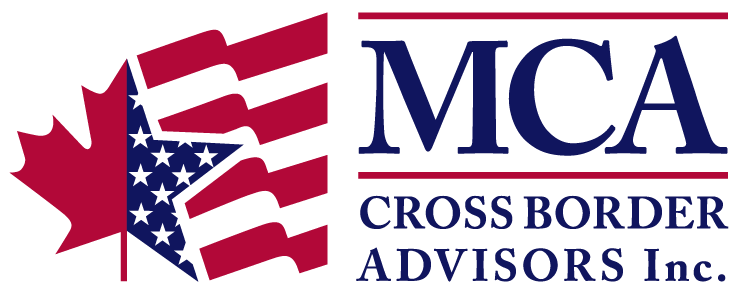As we battle the end of winter, spring may be right around the corner, but it’s tax season that’s captured the attention of many Canadians. A Liberal Party victory in early 2016 not only brought new leadership to Canada, but several federal tax changes as well. These new tax rules can impact your 2016 tax return.
Given these changes, Canadians who are pondering a move to the US might wonder if, from a tax perspective, going south is now even more beneficial. To provide some clarity on this issue, I’ll compare two of Canada’s most significant new tax rules to their IRS equivalents.
Family Tax Cut
One important change was the elimination of the Family Tax Cut, which allowed individuals to transfer up to $50,000 of income to a lower-earning spouse. This change could reduce a family’s after-tax income up to $6,200 annually, or just above the annual individual contribution limit for a Tax Free Savings Account.
There is no comparable credit in the US. As you may know, unlike Canadian taxation rules that force individuals to file their own tax return, in the US, couples can file joint returns. Filing jointly brings with it the advantage of more favourable marginal tax rates; for example, an individual with a taxable income of $200,000 will see a tax liability of approximately $49,000, while the couple filing jointly with the same income will have almost $6,000 more of after-tax income – a tax savings that is almost the exact same reduction that may result from the Family Tax Cut, assuming the highest marginal tax rate.
Federal Tax Brackets
The Canadian federal tax rates have changed in two important ways.
First, for those in the $45,282-$90,563 tax bracket, the tax rate has been reduced from 22% to 20.5%. How do these rates compare to the US rates?
Interestingly, in the US, those filing individually or jointly with an income of $90,000 would be taxed at 25%, almost 5% higher than in Canada.
Second, a new bracket has been created for those with income over $200,000. These taxpayers will now pay 33% tax on every dollar earned above $200,000. This figure is up from 29% in 2015.
Comparatively, filing as a single-filer in the US with an income over $200,000 also puts one in the 33% tax bracket, while joint filers remain at the 28% marginal tax rate until income exceeds $231,450. It is important to note that the tax rate would be 39.6% for income over $415,000 for a single-filer, and for married filing jointly for income over $457,000. Additionally, for income over $233,000 the tax rate is 39.6% for married filing separately. Lastly, there is also another tax bracket between the 33% and the 39.6%, which is 35%.
While the Canadian tax rates are slightly more favourable than the US rates for those in the lower tax bracket, for individual taxpayers who earn over $200,000, tax rates are the same in both countries. The fact that joint US filers in this tax bracket have a slight advantage perfectly illustrates why filing jointly in the US is preferable over filing in Canada.
Keep in mind, though, that the Trump administration is expected to further reduce individual tax rates in the US. If this change comes to fruition, then even US individual filers in the $200,000+ bracket may enjoy a tax break over Canadians.
Another thing to keep in mind: in reality, the true discrepancy between the marginal tax rates in Canada and the US presents itself in the provincial and state marginal tax rates; however, as this blog is focused on illustrating the differences in federal taxes, we haven’t discussed differences in provincial and state taxes.
Whether or not to move stateside is a big decision, one that shouldn’t be based on potential future tax cuts. In addition, many different factors must be weighed before making a cross-border move – taxation is just one of the complex, key considerations that should be assessed.
For guidance on your particular situation, contact us. We can analyze your circumstances and provide you with insight on the tax (and other) advantages of moving to the US vs. staying in Canada.
——–
MCA Cross Border Advisors, Inc. is a registered investment adviser. Information presented is for educational purposes only and does not intend to make an offer or solicitation for the sale or purchase of any specific securities, investments, or investment strategies. Investments involve risk and, unless otherwise stated, are not guaranteed. Be sure to first consult with a qualified financial adviser and/or tax professional before implementing any strategy discussed herein. Past performance is not indicative of future performance.

